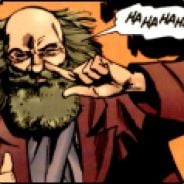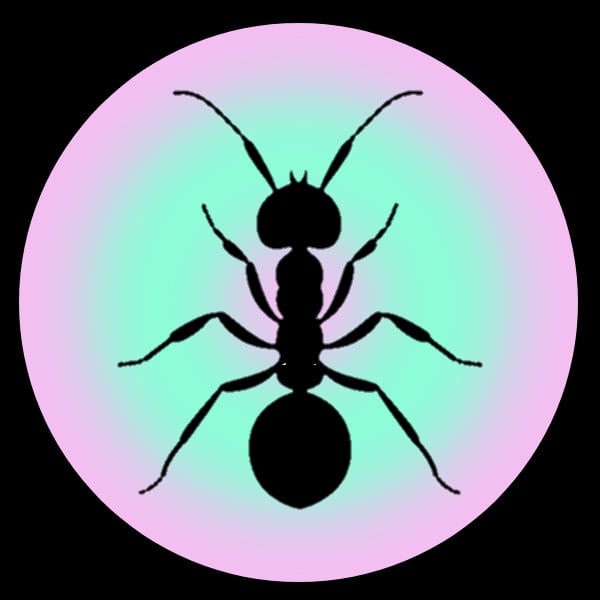Mathematician: this is category theory. No, it didn’t have anything to do with categorization, it just helps us understand how spaces can map to each other. Yeah I guess it’s kinda like graph theory or algebra, but not really. We made a category of graphs, and you can use the category of graphs to represent endofunctors on the category of categories.
– It’s about nothing.
– No sets?
– No, forget the sets.
– You’ve got to have sets.
– Who says you’ve got to have sets? Remember when we were talking about functions of functions? That could be a theory all by itself.
So they are metagaming mathematics?
I don’t know that much of history, but by my accounts category theory is metagaming the metagame of the original mathematics metagamers.
So we’re at least 4 metas deep at this point?
Just wait until the infinity mathematicians shows up and starts assigning cardinalities to the level of meta
Ok but can I use a graphing calculator to graph those graphs?
Also no! The “graphing calculator” is an abomination that should be more rightly called a plotting calculator. But that’s what happens when you let engineers in Texas name something.
It’s a strange feeling to think you understand what you are reading until you get to the end, but you have given me that feeling. I was like “yeah category that’s a word I know. Let’s math the hell out of some categories.” Then I recognized other words you said, but by the time I was at the end of your post I wasn’t sure if I understood anything.
I don’t mind feeling dumb. Honestly it helps keep my narcissism in check. I like math because I don’t understand all of it even though it should be logical.
If it helps, category theory is affectionately referred to by mathematicians as “generalized abstract nonsense”.
It can be very confusing, but it’s sort of a field of math that helps to relate ideas on one area to similar ones in another domain.
Oh. Neat. Like a sort of language interpreter trying to explain an analogy from one language to another? The words might not mean the same when it comes down to the word for word interpretation, but the idea behind them is what matters.
I’ve read a fair few unintuitive mathematical things, but category theory has so far been the worst. Some things are just plain unintuitive and don’t catch your attention. Then there are things that are intuitive and really do reel you in. Finally there are things that seem intuitive but become so complex that your comprehension inverses: what you thought you knew feels wrong because of the new things you learned.
The latter has been my experience with category theory.
It may have nothing to do with categorization, but has everything to do with categorification which is much more interresting anyway.
If only engineering documentation was as precise and comprehensive as this meme claims…
Yeah it’s a managerial function involving skill and time and therefore money, but if it doesn’t directly translate into profits for the corporation, then who has interest in that kind of investment these days?
Oh but don’t worry, there’s plenty of money to do it twice!
That’s tomorrow’s money though.
Plenty of money exists yes, but there is no “will” to use it in this manner - and those who would, get fired or passed over for promotion by those who move fast & break things. Stock dividends rather than programmer salaries - see e.g. all of the tech sector doing multiple rounds of layoffs rather than make documentation or do anything close to proper maintenance for the things that were just built. However, those are (always) problems for the next CEO to have to worry about.
My engineering friends and me propose that physicists should be referred to as theoretical engineers.
I propose engineers not be allowed to name things. Not everything needs to be an “engineer”
What are you, an engineer engineer?
Now hiring for an Engineer². Don’t apply if you dont have 20+ years experience with LLMs
We aren’t the ones who did that. You need to have taken statics and thermo otherwise you’re just a sparkling tradesperson
an enginear
What if I took statics but swapped thermo for emag theory? I feel like that’s pretty even.
Hey, don’t knock the Sandwich Engineers at Subway. They do the Lord’s work
Most mad scientists are actually mad engineers.
As someone with an engineering degree and a science degree, scientists are absolutely nothing like engineers.
They’ve got some things in common.
Technical aptitude. Complete unawareness, or purposeful neglect, of social norms. Science related dad jokes.
True, but I mainly mean in terms of their attitude towards research and their level of skepticism and critical thinking when presented with new information.
Engineers are always thinking in terms of “how can I make this work?” and scientists are trained to think in terms of “where does this theory/method break?”
This means that in general, engineers are far more likely to assume one positive result is significant, whereas scientists are far more likely to be looking at and poking holes in experiment methodology. This is a generalization, but in my experience, engineers are far more likely to fall for pseudoscience BS. Granted, my experience is mostly in chemistry and chemical engineering, but this idea in general has been a topic of discussion and research in peer-reviewed literature for years.
Similarly, from an engineer’s perspective, scientists are a great addition to the working group when you need to find the flaws in the system, but awful when you actually just need something to go into the real world and work 80% of the time ;)
Especially when you’re time constrained.
Definitely. Lots of scientists fall into the trap of letting “perfect” be the enemy of “good”
Doing research, I used to work with mathematicians, engineers AND physicists on a daily basis for years. Physicists were the least fun. Most of them seemed to think of themselves as a sort of Jesuits of Science. As in: “I just figured this out, and already it’s set in stone, why do you even argue with me?” Mathematicians and engineers were a lot humbler, more down-to-earth. Also, some of them were astonishingly edgy in a very positive way.
I’ve heard applied mathematics used for us physicists but that one’s new, nice
There are different kinds of physics researchers and it doesn’t look like what physics lessons show in university, which is mostly theory. Most are not theoricians, they work on experiments and analyze results, they design and build instruments similarly to engineers. It seems the main difference is the kind of question they want to answer to: scientific question vs client need.
What of experimental physicists?
“Theory engineers” would be precise and correct.
Not at all. People (engineers?) seem to forget that experimental physicists exist
Tbf advancement in math usually means “random shit we’re doing for the fun of it” and then 40 years later an actual application is discovered
It took centuries for people to realize number theory could be used for encryption
Someone just Veritasiumed.
Dereked
Wait are we supposed to be making super precise blueprints? They never build what I draw so I just give rough dimensions on a sketch and specify the important bits
I mean there’s not that much precision needed to pick out the toppings on a cheeseburger. You don’t need to specify the mass of the pickles man we do this all day.
I was gonna say…
Pure mathematician here - some of us argue “mathematics is a language”, others of us argue “language gets in the way of mathematics”.
The latter feels much more true; as a species we’re absolutely awful when it comes to talking about abstract things. The thing is, those abstract things are often VERY interesting.
It’s like making a map and being fascinated with the type of trees rather than the shape of the land, because the types of trees tell us about the climate, soil, and even history of the land.
I would say a important part of my job is to find the appropriate mathematical language to model computer programs. In my experience, using efficient language not only helps us discover more structures and connections between different kinds of program, but also leads to efficient and simplistic real-world implementations.
I would argue, from observing the development of this field, It seems like picking the right mathematical language is essential whether you are interested in theory or practicality.
I am not a mathematician, perhaps you can comment on this. From what I read, I feel like a good amount of the achievement for Grothendieck stems from finding the right language to describe the given problem. The result sometimes will follow like magic, once the correct language is discovered.
See now, I’d argue that the language comes after the mathematics. For example, I walk to work each day; part of walking to work is trying to find the route that lets me lie in the longest.
Now, humans are pretty good at exploring and finding alternative routes between locations, and they also tend to locate the shortest route given enough time.
Trying to explain how this intuitive activity works necessitates the use of graph theory. The graph theory was something our brain had constructed in the background, but it wasn’t entirely conscious. Trying to explain this in natural language would take pages, however…
Given a set V of street intersections, and a set E of streets connecting two intersections, and a set W of weights assigned to each E. I can calculate the shortest route by applying one of the pathfinding algorithms (which are expressed in this notation).
This explanation will cover any pathfinding problem, but it’s not great at conveying what is a really happening. The language we must use gets in the way of conveying the mathematics that is going on.
We do need a language (telepathy not being on the menu), but that language is a separate entity from the mathematics itself.
There are “mathematical languages”, but these are present to describe mathematics. There are mathematical theories of language, but again the language itself is not mathematics - its structure, however, has mathematical properties.
I suppose you could say “fire has the property of being hot, but it isn’t hotness itself”? Language is used to communicate mathematics, but it is not mathematics itself.
Now, this is not to discount notational developments in easing communication - that’s a great branch as you have to check your new language and its rules match the mathematics it tries to describe. However, again, it’s important not to conflate the thing you are describing with the thing you are using to describe it!
I say mathematics is what you write down to remember/play with logic, and it has an awkward syntax.
So, let’s say you write down the words “fire is a chain reaction between carbon and oxygen that produces heat”. You’ve characterised fire yes, but is that sentence itself the fire?
Let’s say you write down the equation describing this reaction so you can play with it and manipulate it. Is this fire, or just a convenient way to talk about it?
I’d argue neither of these are fire, and both will never completely describe a fire (though they come damn close).
“language gets in the way of mathematics”.
Look how often one branch of mathematics is found to aid solving a problem in a previously unconnected area.
This demonstrates our mathematical history and choice of language/taxonomy is suboptimal.
You know, I’d never considered that, but yes that does indeed seem to be the case!
Oh man the university ptsd as an engineer. I once asked a physics prof at what width does the split slot experiment break down, she couldn’t understand the question. All the other engineering students were nodding their heads in agreement with the question and tried to explain the question in a different way, still no idea what we were asking.
It’s a good question, but asking it shows that the experiment was explained poorly.
The slits aren’t the reason you see an interference pattern. The slits function as two lenses, similar to a pinhole camera. That’s something that usually doesn’t get explained very well, you can use all sorts of lenses for this, but slits are the most basic (and crucially, glass lenses would cause an interference pattern even if light weren’t a wave).
The double slit experiment is basically “if light is a wave, a slit would behave like a lens, similar to a pinhole camera. If light is a particle, it will simply be a hole without any lensing. Two slits show multiple bars, due to interference from the lenses, which means light is a wave”
Which means this works at any scale. All you need is some light in the same frequency, and something to bend it. That can be two slits, some glass, or an entire galaxy.
There are local limits of course, where the effect still applies, but things become too blurry and diffuse to make out. But that’s more of a limit to your sensor than the experiment.
What a great comment!
That’s when considering the slits as a lens though, which they will act as at any diameter however there’s going to be a width at which the angle of approach and wavelength of the light are insignificant enough that you practically can’t tell that the slits were even there right?
deleted by creator
The interference patter gets closer and closer to a set of independent peaks when you spread the slits away. There is no single point it breaks down, and the wave behavior predicts exactly the “particle behavior” you get when the slits are too far away.
Topology: no, a set being open doesn’t imply that it is closed. What if it’s both? We call it clopen. Moving on.
Interesting. That’s not how I was taught (different time, different language). A set that has some boundary points not being part of a set is open. Otherwise it is closed. It was binary definition. A 1D-sphere (a circle) was classified as a closed set. No boundary. But I looked in google and now it is different.
Biologists: I found this cool bug, it doesn’t act like the other bugs who look like this
(It’s me I aspire to be biologists)

I like how a lot of mathematicians won’t post their code because the pythonistas would destroy them.
Supersets and subsets are pretty simple, and I wish more people would use them when contextualizing human knowledge. (Especially supersets)
I tried explaining something once using sets and supersets, and they didn’t grasp it at all.
I agree; that’s why I’m disappointed.
Probably your explanation needed more morphisms and a monad
As one in engineering, I think our work is less about precision and more about solving (challenging) problems with what is needed and nothing more.
Anybody can build a deck that stands up, an engineer can build one that’s just strong enough to stand up (for rated load haha)
Yeah, it’s about applying physics to real world problems to come up with real world solutions.
Often in a more practical form because unlike in Physics, you can’t start off with “assume zero gravity and a spherical cow shape”
As a design/drafter – I design to ‘look right’ which is probably overkill. Hopefully that headroom helps with the 300lb ape factor.
Anybody can build a deck that stands up
Uhuh.
It doesn’t need to be true, just convey a point :p
I’m a phd chemist who does safety work for (mostly) engineers. I get a lot of “but you can do quantum physics, this should be easy”.
I always reply that it’s just basic maths, anyone who graduated highschool can “do” quantum physics. But I’m convinced all the people who say they can visualize whats going on are just liars. But then, that’s also how I feel about FEM, so what do I know.
I don’t know what high school you went to, but we sure as shit didn’t cover stuff like partial differential equations and functional analysis.
Well, when you get to Lie groups, it gets a lot harder. But generally I agree, nonrelativistic quantum mechanics is mathematically not that hard.
Single particle, one dimension, nonrelativistic QM, exactly. Making it N-particle breaks my brain and will to live.
As long as integrals, group theory and Hilbert spaces are concerned “basic math”, sure, they can do QM.
I think you just have to differentiate whether you want to do mathematically rigorous QM (which gets arbitrarily hard), or just do useful calculations.
People in every field tend to massively over estimate how easy it would be for other people.
Technically, photon momentum is quantum physics, and that’s p = h*f/c = h/lambda
“they have played us for fools”
chad microprocessor vs soy abelian group
Why soy?

















